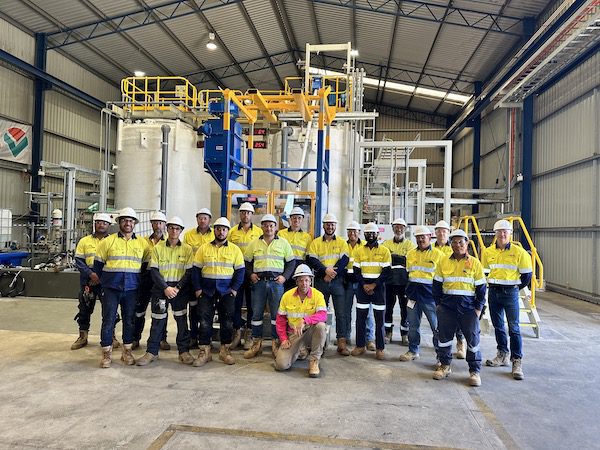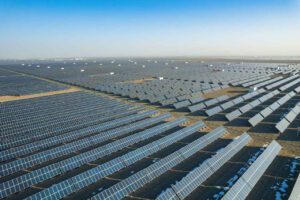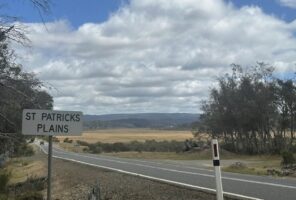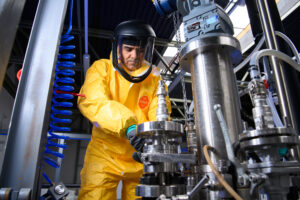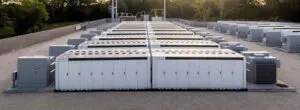Australia Vanadium (AVL) says has finished building its Western Australia vanadium electrolyte manufacturing facility, although commissioning has slipped into 2024.
The electrolyte will initially be sold only to the company’s battery subsidiary VSUN Energy, and be made in batches to order.
An AVL spokesperson says the company is currently building the prototype of its first residential vanadium redox flow battery (VFRB). For other VSUN Energy projects in future the company will buy the battery ready made but use its in-house vanadium electrolyte.
The factory, in the Perth suburb of Wangara, has a maximum production capacity of up to 33 megawatt hours (MWh) of electrolyte a year, a volume it will be capable of producing as soon as it is commissioned in the first quarter next year.
In March, when the company was still expecting commissioning to happen in September this year, CEO Graham Arvidson told RenewEconomy that around 70 litres of electrolyte is needed to generate a kilowatt hour (kWh) of energy, suggesting the plant will be able to produce up to 2.31 million litres of electrolyte a year.
About 6600 pounds of vanadium pentoxide-equivalent feedstock is required to make a 300 kWh battery.
Although the biggest individual lithium-ion batteries are being measured in the hundreds of megawatt hours and sometimes gigawatt-hours, VSUN Energy’s batteries are a touch smaller, meaning the new factory should be able to produced enough electrolyte for multiple batteries a year.
To date VSUN has been contracted for a 78kW/220kWh battery for Western Australian power company Horizon Power to test at Kununurra; a 5kW/30kWh battery to power a water purification chlorinator for Water Corporation WA; a 300 kWh version for battery metals miner IGO; and a 20kW/80kWh battery for an apple grower in Victoria.
The company has been working at commercialising its batteries for several years.
Last year it signed a deal with Sydney-based newcomer North Harbour Clean Energy to find and develop grid-scale opportunities for “Australian invented” long-duration battery storage technology.
Mine-to-battery goal
AVL’s factory was estimated in 2021 to cost $7.4 million and despite construction costs skyrocketing, Arvidson said earlier this year the project was on budget.
If this first factory works as intended, the company plans to build other versions around Australia.
The factory uses technology licensed from US Vanadium to make the electrolyte, for which AVL holds the local licence to use, which is supplying the vanadium pentoxide feedstock needed to make the electrolyte while the mine is still being developed.
Eventually, AVL plans to source its own feedstock from its eponymous yet-to-be-commissioned project at Garabintha, near Meekatharra in Western Australia.
Most of a federal grant of $3.69 to support modern manufacturing went towards building the factory, AVL says.
Vanadium batteries are attractive as a long-duration energy storage option because of their ability to store large amounts of energy, their 20 year lifespan, a very high cycle performance, minimal degradation, and for being safe and non-flammable.

